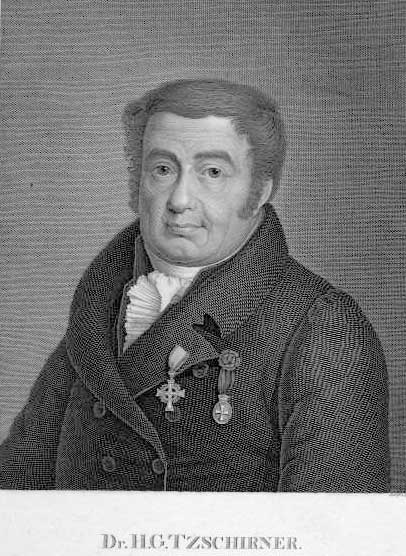|
Zschopau (river)
The Zschopau (, cs, Sapava or Šopava ) is a 130-kilometre-long river in Saxony, Germany, and a left tributary of the Freiberger Mulde. The origin of the name is not precisely documented, possibly Slavic ''skapp''; ''rock'', ''cliff'' or sorb. ''Šučici''; ''the rushing, roaring''). The Zschopau drains a catchment area of 1847 km². Course Its source is in the Ore Mountains, on the slopes of the Fichtelberg at a height of 1,070 metres, near the border with Czechia. It flows initially parallel to the Große Mittweida in a northerly direction. The Zschopau forms the boundary between the western forest district of Crottendorf and the eastern districts of Oberwiesenthal and Neudorf. After leaving the forests on the Fichtelberg, it passes the forest settlement of Crottendorf with its hamlet of Walthersdorf. In the town of Schlettau it is joined by the Rote Pfütze. It then flows through the towns of Tannenberg, Wiesa and Wiesenbad Thermal Springs. Then the Zschopau collect ... [...More Info...] [...Related Items...] OR: [Wikipedia] [Google] [Baidu] |
Wolkenstein (Ore Mountains)
Wolkenstein is a town in the district Erzgebirgskreis, in Saxony, Germany. It is situated in the Ore Mountains, on the river Zschopau, 22 km southeast of Chemnitz. The town is situated on a rocky spur near the confluence of Zschopau and Preßnitz. Its name is derived from the eponymous castle which is situated ca. 70 m above the river, and whose name signifies a rock that rises into the clouds. Aside from the town itself, Wolkenstein consists of the following subdivisions: Of these, Warmbad is a spa town known for its hot spring with a variety of medicinal uses. History A Herrschaft Wolkenstein is mentioned in 1262. The town itself was first mentioned in 1293, and was first called an "oppidum" in 1323. A school was first recorded in 1385. From 1378, Wolkenstein was the seat of the noble family of Waldenburg. After they died out in 1473, it reverted to the House of Wettin. At the same time, mining started again in the area. The Protestant Reformation was introduced i ... [...More Info...] [...Related Items...] OR: [Wikipedia] [Google] [Baidu] |
Riesa–Chemnitz Railway
The Chemnitz–Riesa railway is a two-track and electrified mainline railway in the German state of Saxony, originally built and operated by the ''Chemnitz-Riesa Railway Company''. The line was opened between 1847 and 1852 and is one of the oldest railways in Germany. The line runs from Riesa via Döbeln to Chemnitz and is part of the Berlin–Chemnitz route. History In 1837, plans were submitted for a rail link from Riesa, a major freight hub on the Elbe river, to Chemnitz and on to Zwickau, which was significant as a coal-producing region. After the Leipzig–Dresden railway was opened, connecting the industrial city of Chemnitz to Leipzig and Dresden, even if it involved a detour via Riesa, was given the highest priority. On 9 May 1845 construction started and progressed rapidly on the northern section from Riesa to Döbeln. The line was officially opened on 29 August 1847 and on 22 September 1847 it was extended a short distance to Limmritz. Döbeln initially only had a ... [...More Info...] [...Related Items...] OR: [Wikipedia] [Google] [Baidu] |
Waldheim, Saxony
Waldheim is a town in Mittelsachsen district, in Saxony, Germany. Geography It is situated in the valley of the river Zschopau, southwest of Döbeln, and north of Chemnitz. The municipal area comprises Waldheim proper, the localities of Reinsdorf, Massanei, Heiligenborn, and Schönberg, as well as parts of the former Ziegra-Knobelsdorf municipality with the localities of Gebersbach, Heyda, Knobelsdorf, Meinsberg, Neuhausen, and Rudelsdorf, which were incorporated in 2013. Neighbouring towns are Hartha, Döbeln and Geringswalde as well as the municipality of Kriebstein. Waldheim station is a stop on the Riesa–Chemnitz railway, served by Regionalbahn trains of Deutsche Bahn and the private Vogtlandbahn railway company. History Waldheim in the Margraviate of Meissen was first mentioned in 1198. Waldheim Castle first appeared in a 1271 deed, the surrounding settlement received town privileges in 1286. The castle was turned into an Augustinian monastery in 1404. The populati ... [...More Info...] [...Related Items...] OR: [Wikipedia] [Google] [Baidu] |
Kriebstein Castle
Kriebstein Castle (german: Burg Kriebstein) is a castle in Kriebstein near the town of Waldheim in the German state of Saxony. Location The castle rises above steep crags over the River Zschopau. Within the topographical grouping of hill castles it is classified as a spur castle because it lies on the extreme end of a hill spur surrounded on three sides by the Zschopau that flows around the spur in a large bow. Layout The rock on which the castle stands is separated from rising ground behind it by a man-made section of ditch, the so-called ''Halsgraben''. Typologically the Kriebstein is a combination of a tower castle (''Turmburg'') and a ringwork castle (''Ringburg'') with an oval ground plan. Dominating the whole site is the monumental keep perched atop the highest crag. With its sides measuring 22 x 12 metres, the tower, including its weather vane, reaches a height of 45 metres. Its late medieval oriel turrets and the flèche give the castle a unique and thus unmista ... [...More Info...] [...Related Items...] OR: [Wikipedia] [Google] [Baidu] |
Flöha (river)
The Flöha (; cs, Flájský potok) is a river in Saxony, Germany, and the Czech Republic. It flows into the river Zschopau in the town Flöha. See also *List of rivers of Saxony *List of rivers of the Czech Republic This is a list of rivers of the Czech Republic. Naming conventions Czech language distinguishes between larger (river) and smaller (stream, creek, brook etc.) watercourses; the respective nouns being '' řeka'' (feminine, "river") and '' potok' ... References Rivers of Saxony Rivers of the Ústí nad Labem Region International rivers of Europe Rivers of Germany {{CzechRepublic-river-stub ... [...More Info...] [...Related Items...] OR: [Wikipedia] [Google] [Baidu] |
Augustusburg
Augustusburg () is a town in the district of Mittelsachsen, in Saxony, Germany. It is situated 12 km east of Chemnitz. Augustusburg is known for its ''Jagdschloss'', the hunting lodge of the same name. The town includes the ortsteil or town quarters of: * Augustusburg * Erdmannsdorf * Grünberg * Hennersdorf * Kunnersdorf A funicular railway, the Augustusburg Cable Railway, connects Erdmannsdorf-Augustusburg station, in the village of Erdmannsdorf and on the Zschopau Valley Railway, with the town. Geography Location Augustusburg is located in the Ore Mountains (Erzgebirge), approx. 15 km east of Chemnitz, 5 km south east of Flöha, 20 km south west of Freiberg and 9 km north of Zschopau in the district of Mittelsachsen. Situation Augustusburg is situated on a ridge between the valleys Zschopau and the Flöha Flöha () is a town in the district of Mittelsachsen, in Saxony, Germany. Flöha is situated on the confluence of the rivers Zscho ... [...More Info...] [...Related Items...] OR: [Wikipedia] [Google] [Baidu] |
Annaberg-Buchholz–Flöha Railway
The Annaberg-Buchholz–Flöha railway (german: Bahnstrecke Annaberg-Buchholz unt Bf–Flöha), also called the Zschopau Valley Railway (''Zschopautalbahn'') is a branch line in the German state of Saxony. It links Annaberg-Buchholz lower station (german: unterer Bahnhof, abbreviated as ''unt Bf'') and the Vejprty–Annaberg-Buchholz railway line to Flöha, running through the Zschopau Valley via Wolkenstein and Zschopau. It has been operated since 2001 by the DB Regio subsidiary Erzgebirgsbahn. History In the middle of the 19th century Annaberg was one of the largest cities in Saxony. Citizens of Annaberg founded a railway committee (''Eisenbahncomitee'') that fought for a connection to the recently established railway network. Initial investigations for a railway connection between Chemnitz and Annaberg began in 1858. At that time Chemnitz already had a rail connection through the Chemnitz–Riesa Railway, completed on 1 September 1852, and the Zwickau-Chemnitz line (known a ... [...More Info...] [...Related Items...] OR: [Wikipedia] [Google] [Baidu] |
Wilisch (river)
The Wilisch is a river of Saxony, Germany. It is a left tributary of the Zschopau, which it joins near the town Zschopau Zschopau (), is a town in the Erzgebirgskreis district of Saxony, Germany. Geography The town is located on the northwestern slopes of the Ore Mountains, on both banks of the Zschopau River, about south-east from Chemnitz. The highest point .... See also * List of rivers of Saxony Rivers of Saxony Rivers of Germany {{Saxony-river-stub ... [...More Info...] [...Related Items...] OR: [Wikipedia] [Google] [Baidu] |
Scharfenstein (Drebach)
Drebach is a municipality in the district of Erzgebirgskreis, in Saxony, Germany. It consists of the ''Ortsteile'' (divisions) Drebach, Grießbach, Im Grund, Scharfenstein, Spinnerei, Venusberg, Wilischthal and Wiltzsch. Gemeinde Drebach, accessed 12 October 2021. Sights Scharfenstein Castle Scharfenstein Castle is located in the Village of Scharfenstein in the valley of the river . It houses, amongst other things, a permanent exhibition of |
Mittweida
Mittweida () is a town in Saxony, Germany, in the Mittelsachsen district. Geography Mittweida is situated on the river Zschopau, 18 km north of Chemnitz, and 54 km west of Dresden. Embedded within the steep hills and valleys of the river and two smaller creeks, the town is green and picturesque. Mittweida has a station on the Riesa–Chemnitz railway. A branch line, closed in 1997, served the industries in nearby Dreiwerden and Ringethal. Major roads are the state roads S200, S201, and S247, connecting the town with various federal roads and the motorway A4 which passes south-east of Mittweida. History The town was first mentioned in 1209. In 1286 it was known as ''civitas'' and ''oppidum''. Weaving of wool and linen were major occupations of the inhabitants in the Middle Ages, and after a spinning mill was founded in 1816, the town grew into one of the major textile-producing centers in Saxony of the 20th century. Mittweida was already a sizeable town in the mid-16th ... [...More Info...] [...Related Items...] OR: [Wikipedia] [Google] [Baidu] |


